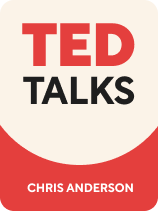

This article is an excerpt from the Shortform book guide to "TED Talks" by Chris Anderson. Shortform has the world's best summaries and analyses of books you should be reading.
Like this article? Sign up for a free trial here .
Why is it important to have a clear message in public speaking? How do you define your message?
In public speaking, your message is the key point of your speech. According to Chris Anderson, the author of TED Talks, you should be able to encapsulate your message in one sentence, and it should permeate your talk from start to finish.
Here are some things to keep in mind as you craft your message.
How to Develop Your Message
In public speaking, your message is the “throughline” permeating your speech, your key point. So if your idea is, “I want to talk about my trip to Alaska and how the Inuits live,” an example of a throughline would be, “People who live in small, self-sufficient communities live more creatively than people in big cities.”
Anderson says you should be able to express your throughline in one sentence. By thinking of it in such concise terms, you’re more likely to stay on track. Imagine this throughline as a connecting thread that’s woven in and out of your speech from beginning to end. When this is done well, the audience remains engaged.
Avoid predictable throughlines. Anderson says an element of surprise ensures your audience’s curiosity from the beginning. For example, which speech sounds more interesting: The Dangers of Procrastination or The Benefits of Procrastination?
Some examples of effective throughlines include:
- Having willpower isn’t enough to break a habit.
- Showing weakness is the strongest action you can take.
- Limiting screen time can damage your child.
Note that each of these is one sentence, contains a lesson, and has a surprising approach.
| Keep Your Audience on Track Anderson says that a throughline ensures your audience will stay with you from start to finish. Additional strategies to keep your listeners’ attention include: Use transition words and phrases to let them know where in the speech you are. “It began with…” “After that, I…” and “Finally, I learned…” all help your listeners follow the rhythm of your talk. Avoid jargon. A sentence or two of incomprehensible language is enough to lose your audience’s attention. Use words that everyone can understand. Use analogies and stories to explain the more complicated parts of your speech. They give your audience a break from concentrating and are enjoyable. Make the conclusion clear and connect it back to your main point (throughline). An abrupt end is jarring to the audience, so design your last handful of sentences to signal that the speech is coming to a close. |
The Difference Between a Topic and a Throughline
Anderson makes a clear distinction between topics and throughlines. A topic is what your speech is about, but the throughline is the lesson. A topic is also circumstantial, while the throughline is universal. Think of the topic as the tool you use to illustrate your throughline.
Whoever asks you to speak might assign the topic or the throughline, but Anderson says it’s rare to be given both. For example, you might be asked to speak at a conference on the topic of your new invention, but the throughline is yours to develop. Or, you might be asked to speak to your company about the benefits of collaboration, but how you illustrate that message (your topic) is your choice.(Shortform note: In Talk Like TED, Carmine Gallo recommends incorporating a “shocking moment” into your presentation. This can include an unbelievable statistic, a startling photo, a surprising story, and so on. He says that this shocking moment should drive home the message of your speech—or, in Anderson’s terms, your throughline.)

———End of Preview———
Like what you just read? Read the rest of the world's best book summary and analysis of Chris Anderson's "TED Talks" at Shortform .
Here's what you'll find in our full TED Talks summary :
- A nuts-and-bolts guide to public speaking that takes you from the initial idea to your final bow
- TED curator Chris Anderson's public speaking advice on everything from scripting to wardrobe
- A comparison of Anderson's advice to that of other public speaking experts






